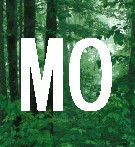
|
||||||||||||||||||
|
|
||||||||||||||||||
  








  









| ||||||||||||||||||
Sasquatch Vocalizations
Alicia BatemanImagine being on a camping trip. You haven't got a large fire going, it's just enough to roast a few marshmallows and keep you and your friend comfortable. You're both used to hearing coyotes, and three or four of them have been singing across the canyon from you for a little while now. Below you, you can hear the steady, white noise of a river. It's getting fairly late in the season, there aren't as many people up here as there might have been in July.
Being that the clock is getting gradually closer to one in the morning, you're getting kind of tired. You turn toward your friend, about to suggest it's time to turn in. A high pitched, unbelievably loud noise cuts the night air. The coyotes go quiet as it echoes through the gash in the landscape. For a moment, as your hair stands on end, it seems as though everything in the forest has stopped. You and your friend look at each other. "Cougar?" he suggests, looking quizzical. But you've both heard the cat's calls; something about this was different. Maybe you talk it over for a little while before finally succumbing to your need for rest. You've talked about it, thought about it, and all you know is what this animal was not.
Until, perhaps, you hear some story, somewhere, about something . .
Vocalizations play a key role in the communication of most mammals, both within their species and to members of other species. The same holds true for the sasquatch. These creatures have the need to convey information to each other and other animals, both in close quarters and sight unseen.
Learning what vocalizations are attributable to sasquatches can help notify one of their presence in a given area. Ascertaining the behavioral significance (the meaning) of individual vocalizations can help a researcher make a judgment on what calls to play back or imitate him- or herself. After all, it would be wonderful if a call could be played to initiate more peaceful contact rather than a territorial challenge.
Knowledge of their calls is a window into their behavior, another piece of a puzzle that people have been trying for so long to put together. It is vital to move beyond just the "scream," "howl," and "whistle," and look deeper, into their variants and individual meanings therein. My hope that is that doing so can help bring another piece or two together.
It is important to remember that many creatures produce an array of strange calls. Deer can bleat and squeal; foxes and porcupines can and do scream; common nighthawks whistle and produce a sort of low buzzing sound when courting. The repertoire of owls is simply astonishing. And, of course, you often have other humans running around. With all these other possibilities, there is a lot to take into consideration when looking at a vocalization that may be sasquatch-related. These possibilities are almost always there, and there is the ever-present risk of misidentification.
With that in mind, I've put this paper together as best I can.
Vocalizations contained here are broken down by type, where applicable, rather than possible behavioral significance. There simply is not enough information available to me for such categorization to be complete and correct. It is also important to note that this paper is geared more toward the Pacific North West population of sasquatches, thus differences in regional vocalizations will be apparent.
Screams:
Easily the most common type of vocalizations attributed to
sasquatches are, collectively, known as "screams." Several calls
have been lumped together using this word alone. For the purposes
of this paper, different types of screams have been sorted and
given each type a name. Each scream is looked at for possible
behavioral significance individually. Not every scream is
territorial, or a warning.
As always, it is important to realize that there are other explanations for some of the sounds. Others defy conventional explanation. Still other sounds are truly similar to more common animal noises, so much so that only circumstances and subtle differences can distinguish them.
A description is provided for each call, along with possible behavioral parallels and significance.
 |
A spectrograph of the Tahoe scream recording. (The recording itself is not currently publicly available.) |
Cycled, repetitive call with a fluid, bell-like quality. Most intense near the beginning of the call, then fades. Examples of this scream include the more famous Puyallup recording, the Del Norte scream recording, the recording mainly referred to as the Snohomish, and the believed juvenile example, the Tahoe Scream. It is possible that other recordings of this call exist as well.
A similar call exists in the orangutans. Though it is not possible, at this time, to say there is a behavioral parallel in the usage of this vocalization, it is not entirely unlikely. In orangutans, this is a call used by adult males. He gives the call mainly while he patrols his territory. In orangutans, it deters rival males and non-breeding females, while drawing in females who are ready to mate.
Because sasquatches do appear to be more social than orangutans, it is likely that the exact behavioral significance may be slightly changed. Or, at least, the circumstances. Still, based on responses to playbacks, it does appear to be a territorial call, possibly, in this case, to deter males outside the family group.
Sometimes, this type of scream is associated with movement on the part of the animal, occasionally toward a human observer. If this is a territorial call, it is likely that this is territorial behavior. In these cases, it might be that the message is more one of "get out" than an actual threat. Purely speculative, of course.
Musical Scream:
Possibly a Long Call-type variant. Like the Long Call-type in
its notes, but with a change in rhythm. Instead of reaching its
crescendo near the beginning of the call and then backing off,
like the Long Call-type, the Musical Scream hits its crescendo in
about the middle of the vocalization. This more intense high note
is then followed by a softer, slightly lower, note, a little
quieter than the key it began on. The overall sound of the
vocalization is very flowing, musical, and not very difficult to
imitate by singing.
It is possible that this could be related to the Long Call-type in its behavioral significance, as it seems to be in the way it is produced. Something else that seems possible to me is that this call is more directly related to mating than the Long Call-type; pure speculation, of course. Without any reference to this call in context, that I am aware of, it is impossible to reach any conclusion on its meaning.
Two-toned Scream:
Short, sharp calls with two nicely defined notes. I've heard it
twice. It's a higher high pitched note followed by a lower high
pitched note. The slurring from one note to another is brief, the
transition smooth. The call itself is only about 1-2 seconds.
When I heard it, it was not repeated. The first time I heard the
call, it was followed by an intense, low tone. On the other
occasion I heard it, no added low tone was present. May be a
response to something, but behavioral significance unknown.
"Whining" or Whispered Scream:
High pitched, but very soft; low volume. Notes quiet, sweet, and
gentle with some variations in pattern. Quiet, seems
nonaggressive. Exact significance unknown, but it seems like a
subtle, close-quarters communication and/or contact call.
I've heard it at close range (approximately 20 feet away) once, associated with bipedal movement. The animal would vocalize when I aimed a flashlight in its general direction, quiet down and move toward me when the flashlight was facing a different direction. Though this was a little unnerving, I've considered that nothing about this seemed at all hostile. The vocalizing animal made none of the sounds normally associated with an aggressive encounter, such as a loud scream, roar, or growl. Nor did it move quickly or break tree limbs. One wouldn't think that serious stalking behavior would include a vocalization, based on the silence of other predators.
Some owls can produce a similar sound, thus a quiet high pitched noise without any extraneous evidence to indicate it is sasquatch-related should be considered objectively.
Repeated Echoing:
Echoing, beautiful call. Possibly to three notes, very smooth
transitions. It has a pretty, haunting, flowing impression but is
rather high pitched. More of fades than stops abruptly, but not
protracted. Repeated 2-5 times a set when I heard it. Done in
both day and night. It has been recorded at least two times, that
I know of. It sounds slightly similar to the Whispered Scream,
though at a higher volume.
Behavioral significance unknown, but the feel of it is not aggressive. Because of its similarity to the Whispered Scream, it is possible that the two are related. If correct, that could mean this vocalization has the same or similar significance as the Whispered Scream. Unfortunately, there is no way for me to say this with any certainty at this time. Behavioral significance is unknown.
"Whoops":
Repetitive, high pitched, echoing, whooping. I've never heard
it, but I understand it sounds a bit like "Whoop" being screamed
over and over at high volume. It may sound similar to the
Repeated Echoing, but with a tighter ending.
Behavioral significance unknown, but they sometimes respond to the human-screamed version; I gather a sasquatch can get aggressive if you "whoop" again after it's replied, though there are other reactions--like leaving the area. The second time I did it with a response, I heard bipedal footsteps walking toward me. (Based on location, human was ruled out completely.) While a little eerie, it did not seem aggressive.
Distressed-type:
Described as "blood curdling" or "like a woman being murdered."
I haven't heard of it being repeated, though it may. If an actual
sasquatch vocalization, it is possibly a pain/distress or female
threat vocalization, based on comparisons to the orangutan.
Foxes also produce a vocalization somewhat similar to a woman screaming, as do cougars. Thus, though an intriguing sound, it may or may not truly belong in this paper.
Manlike Scream:
Very similar to an adult human male screaming. I have heard a
recording. The sound was sharp, high pitched, and has a very
slight hollow quality. The call was repeated once. Behavioral
significance unknown, but it has been suggested that this was
done in imitation of human yelling.
Siren-like:
A siren-like scream. I haven't heard it, but the description
brings to mind something a gibbon would do. But, having never
heard it, I can't be sure. Behavioral significance unknown.
Flat Shriek:
Single toned scream, I've heard of it being repeated. Appears to
be a threat vocalization, the screamer putting as much power as
it can into each cry.
Roaring Scream:
A deep, guttural scream. The roar, reported comparatively
rarely, is probably a deeper variant on this, quite possibly made
deeper due to greater size in the vocalizing animal. This is more
than likely a direct threat, as both variants have been reported
directed at human observers, occasionally with additional
behavior on the part of the vocalizing animal.